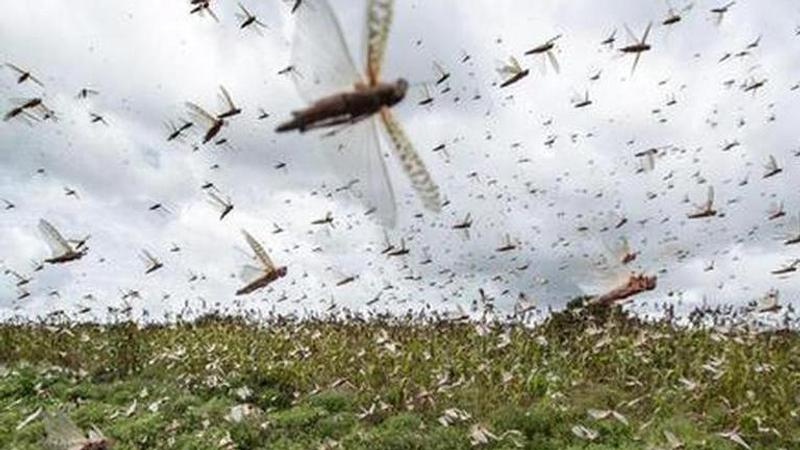Published 18:06 IST, June 27th 2020
Locust attack: Delhi govt puts all districts on high alert; issues advisory
The Delhi government on Saturday put all districts on high alert and asked the district magistrates to coordinate with the fire department for spraying of pesticides and insecticides

The Delhi government on Saturday put all districts on high alert and asked the district magistrates to coordinate with the fire department for spraying of pesticides and insecticides to prevent a possible attack of crop-destroying locusts in the national capital, after their swarms descended on neighbouring Gurgaon.
An advisory issued by the Delhi development commissioner said that residents can distract the locusts by making high-decibel sound through beating of drums, utensils; playing high-volume music, bursting crackers, and burning neem leaves.
The advisory asked the people to keep doors and windows closed and cover outdoor plants with plastic sheets.
The district magistrates have also been advised to deploy adequate staff to make villagers and residents aware of these measure.
"Swarms of locusts usually fly in daytime and rest during night. Therefore, they should not be allowed to rest during night time," it read.
"Night spray of malathion or chlorpyrifos is useful. PPE kits may be used while spraying for safety, the advisory said.
Earlier, Delhi Environment Minister Gopal Rai chaired an emergency meeting of senior officials where he was informed that swarms have also reached the Asola Bhatti area in South Delhi.
He asked district authorities to remain on high alert. The forest department was directed to take various steps to repel the swarms of locusts, the official said.
He also asked officials of the agriculture department to make field visits to areas close to Gurugram.
The development secretary, divisional commissioner; director, agriculture department and district magistrates of South Delhi and West Delhi attended the meeting, the official said.
However, the migratory pests are likely to spare the national capital for now, officials said.
The swarms of locusts, spread across two kilometres, entered Gurgaon around 11.30 am, K L Gurjar of the Locust Warning Organisation, Ministry of Agriculture, told PTI.
The pests, he said, were headed towards Faridabad and Palwal in Haryana.
The skies over many parts of Gurgaon turned dark as swarms of locusts descended on the city.
Alarmed at the invasion of the locusts, which settled on trees, rooftops and plants, many residents of Gurgaon shared videos from their high-rise perches.
In May, India battled a devastating desert locust outbreak. The crop-destroying swarms first attacked Rajasthan and then spread to Punjab, Gujarat, Maharashtra and Madhya Pradesh.
According to experts, broadly four species of locusts are found in India – desert locust, migratory locust, Bombay locust and tree locust. The desert locust is considered the most destructive.
It multiplies very rapidly and is capable of covering 150 kilometers in a day.
This insect, a type of a grasshopper, can eat more than its body weight. A one square kilometer of locust swarm containing around 40 million locusts can in a day eat as much food as 35,000 people.
Experts blame the growing menace of desert locusts on climate change. They say breeding of locusts is directly related to soil moisture and food availability.
Updated 18:06 IST, June 27th 2020




